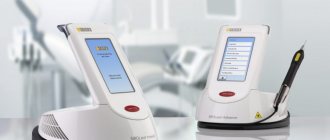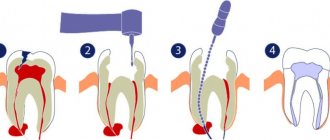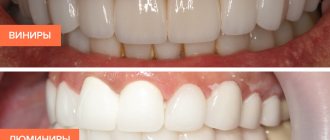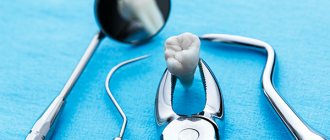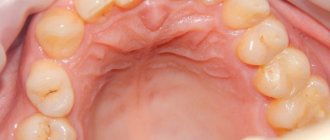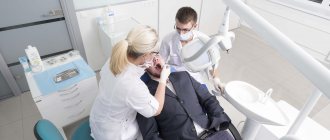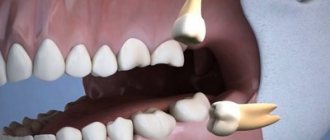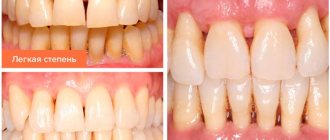Inflammatory processes that form around the root are very dangerous, because they not only destroy the cement of the root and the adjacent bone tissue of the jaw, but also affect the gums. If a dentist discovers a cyst, then soon a trip to the surgeon will be necessary, but this does not mean that the patient will lose a tooth. At the Implantmaster clinic, cyst removal is performed without tooth extraction. Our specialists use the latest surgical techniques and equipment.
Removal of a dental cyst is a serious operation in dental surgery. Two decades ago, the presence of a purulent formation on the root led to the removal of a possibly healthy tooth. Modern treatment options for cysts are more varied. There are many therapeutic (conservative) and surgical methods to combat tumors. If doctors have the necessary knowledge and professional skills, patients can count on receiving quality treatment.
In the innovative dental clinic "Implantmaster" in Moscow, cyst removal is carried out by specialists of the highest category, who regularly improve their skills in the best clinics in Europe. We are able to solve complex problems in the fastest possible time and satisfy the needs of even the most demanding patients, setting loyal prices for the services provided. Our doctors are constantly improving their skills, mastering new techniques for removing cysts. The latest materials are used, modern equipment is used for diagnosis and treatment.
Next we will talk about the very concept of “cyst” and methods of its treatment. You will also learn about the main stages of removing a dental cyst, and will be able to get acquainted with the indications for the surgical operation.
What is a dental cyst and how to remove it?
Radical dental cyst is a complex chronic disease. It has its own shell and is filled with purulent contents. The disease progresses on the roots and under the gum. A cyst appears when early infectious inflammation, which is based on pathogenic microflora, is not treated.
Removal of a dental cyst is performed surgically . The tumor can grow, affecting the gums and cheeks from the inside of the mouth. In some cases, sepsis may develop.
All this makes it difficult for the patient to function normally. To cure the disease, conservative methods are used:
- at the beginning of the procedure, the doctor informs the patient about the possible consequences (it is worth making this the first point);
- the doctor performs an opening of the dental cavity;
- cleansing the cavity from affected tissues;
- treatment with solutions of antibiotics and antiseptics;
- Then, within half an hour, the tooth cyst is removed without removing the tooth .
The patient will have a chance for recovery and further normal life. The main feature of this disease is its asymptomatic course. The patient may remain unaware for a long time. The consequences of this disease can lead to another complex process - sinusitis (if the cyst is located near the sinuses). It is imperative to monitor the cleanliness of the oral cavity and the condition of the gums, and also come to the doctor for sanitation on time.
Cystectomy and dental cystotomy: what is the difference?
Some patients confuse the “cystectomy” and “cystotomy” techniques, believing that both of them are used to perform the same operation, however, this is not entirely true. Both operations are used in the presence of cystic formations, they are both effective, but they have a number of differences. You can see them in our table below:
| Parameter | Cystotomy | Cystectomy |
| Methodology | The surgeon opens the front wall of the cyst, removes its contents, and at the same time creates a hole through which the pathological contents flow out. | The surgeon completely removes the cystic formation and treats the cavity with an antibacterial solution. Then it brings the edges of the mucous membrane closer together. |
| Indications | Large formations covering several units, as well as the palatal plates and mandibular base. | Small formations covering one or two units without the risk of complications as with cystotomy. |
| Contraindications |
|
|
| Duration of the rehabilitation period | Within one year. | For several months |
Causes of dental cysts
Ten percent of patients have indications for removal of a dental cyst. Most do not suspect anything, because the disease proceeds secretly for a long time and does not manifest itself in any way. Often, cyst formation is a hereditary disease, and sometimes it indicates poor oral hygiene. But more often the reasons are untreated diseases or the use of low-quality products and drugs, leading to the need to remove the dental cyst. If you identify this disease in time and immediately consult a doctor, it will not be difficult to cope. But if you leave a formation with pus and mucus for several months, it can grow up to 2-3 cm. In this case, proper surgical removal of the dental cyst should be entrusted to a qualified specialist.
Implantmaster employs highly qualified specialists; they have the necessary skills for comfortable and high-quality treatment. Also, to correctly diagnose the disease and determine the exact size of the cyst, the clinic has a CT scanner (the images are more accurate and the radiation is even less), it is possible to take a panoramic image of all teeth, as well as targeted radiography of a specific tooth. The diagnosis becomes more accurate.
There are several causes of cysts:
- A complicated form of caries is severe destruction of the enamel, through which microbes penetrate inside and form purulent foci.
- Untreated pulpitis, when part of the nerve is outside, is a good flora for the growth of bacteria.
- The complication of periodontitis, with inflammation of the connective tissue, is the most difficult to detect.
- Removal of a dental cyst is often necessary for children when replacing milk teeth with permanent ones; microbes can penetrate into the sockets.
- The injured mucous membrane of the palate, cheeks, tongue, and gums can serve as an excellent route for the penetration of microorganisms.
- Past disease of the ENT organs. Colds, chronic tonsillitis, pharyngitis, sinusitis can cause a tumor and the need to remove a dental cyst, otherwise dangerous complications cannot be avoided.
The mechanism of formation and growth of a dental cyst
The cystic cavity, located in the jaw, has external resistance from the surrounding jaw bone. But the epithelial cells of the lining begin to produce fluid, which gradually fills the cavity, creating excess pressure.
This pressure acts on the surrounding bone tissue, causing its gradual peripheral resorption, giving the cyst the opportunity to grow even larger, increase fluid secretion, and therefore put even more pressure on the walls. This is why cysts can grow to very large sizes, sometimes asymptomatically, if not accompanied by periodic inflammation. This may be due to the patient’s good immune status, low pathogenicity of the microflora in the lesion and other factors.
When is it necessary to remove a dental cyst?
Is surgical removal of a cyst on a tooth necessary? In some cases, such a radical method cannot be avoided. If the affected tissue is not eliminated, the bubble with purulent contents will increase in size and create pressure on the gum. The outcome may be tumor formation.
Indications for removal:
- capsule diameter is more than 1 cm;
- the presence of a pin in the root canal, which prevents refilling;
- the canal is not completely sealed, there is no material near the very top;
- Conservative treatment is not effective.
Problems solved by cystotomy of a dental cyst
A cystic formation is a capsule with pathological fluid that is localized around the root. The composition of its contents is pathogens and dead cells. Cystotomy does not remove it; its task is to minimize the pressure inside its cavity, due to which it gradually flattens and can completely or partially resolve. The cyst itself is a source of infection that can provoke a number of serious complications:
- Involvement of healthy tissues in the pathological process;
- Destruction of jaw tissue around the tooth;
- Formation of fistulas;
- Development of abscesses.
Moreover: dentists note that there is a risk of degeneration of the cystic formation into a neoplasm of a malignant nature.
Methods for removing dental cysts
Correct treatment of a dental cyst without removal depends on the causes and clinical course. The clinical picture becomes clear after examination in a chair, a targeted photograph, a panoramic photograph of all teeth, . These examination and diagnostic methods for the necessary removal of a dental cyst are available at Implantmaster in Moscow. Examinations are performed before surgery to determine the specific location of the inflammation. If possible, conservative therapy is used to prevent further increase in inflammation. It consists of using a rubber dam to isolate the working field and provide comfort during treatment. Next, the pulp chamber is opened, cleaned, treated with an antiseptic solution and the canals are sealed. Therapy involves taking antimicrobial drugs, vitamins and other medications. If conservative tactics are not effective, then various surgical techniques are used to remove the tooth cyst without removing the causative tooth.
Cystotomy
Used for large cysts. The doctor removes parts of the formation that are not in contact with the vessels. Afterwards, an obturator is installed into the resulting cavity - a device that prevents tissue fusion. After some time, the remaining portion of the cyst joins the epithelium of the oral cavity, changes its structure and becomes safe for the body.
Hemisection
During the operation, the root to which the formation is attached and the adjacent coronal part are removed. The resulting space is restored using an orthopedic structure. The above method is quite traumatic, so it is considered outdated.
.
Cystectomies
The Implantmaster clinic answers the question: is it possible to cure a dental cyst without removing the tooth itself? – positive. Our specialists use the most modern technique - cystectomy. The tumor is completely removed without affecting healthy tissue. The operation takes place under local anesthesia in the surgical office and involves the use of a Labomed Magna dental microscope.
At the beginning of the procedure, the specialist determines the location of the patient’s formation based on examination and x-ray images. He “opens” it, cleans out the contents with special tools, puts antiseptic inside and stitches it up. After some time, the cavity remaining after the operation heals on its own, without requiring additional replanting of bone blocks. Cystectomy surgery takes 15-40 minutes, depending on the size of the cyst and bone structure. After an hour, the patient can go home.
Progress of the operation
Before surgery, the specialist performs local anesthesia of the tissues. After this, the doctor performs the following steps.
- Incision of the gum and detachment of the soft tissue flap.
- Creation of a burr hole in the bone. It is made the size of a cyst or larger to avoid narrowing of the bone defect.
- Excision of the bladder wall. Removing fluid.
- Removal of roots if they fall into the surgical field.
- Suturing the cyst wall to the soft tissues of the oral cavity.
- Antiseptic treatment.
- Attaching a soft tissue flap to the edge of the wound.
- Closing the wound with a tampon soaked in iodine solution. After surgery, it must be constantly changed.
- Stitching.
Get a consultation
We will answer all your questions before visiting the clinic!
+7
Online registration
Removal of a dental cyst by resection
Removal of a dental cyst by resection of the root apex is a tooth-saving operation, i.e., making it possible not to part with the tooth. It is carried out by excision of the root and removal of the affected fragments. Then, to avoid the spread of infection to adjacent areas of hard and soft tissue, the canal is sealed. As a result, this is a good way to cure a dental cyst at the initial stage without removing the entire unit. If a fragment of the tooth remains, it will be replaced with prosthetics in the future. Tooth-preserving methods are valued by specialists because they help preserve the integrity of the dentition. Therefore, resection of the root apex is also used in other cases:
- Inflammation of the tooth under the crown. The obvious solution is to remove the prosthesis, remove the abscess, and install a new design. However, these manipulations are more costly and time-consuming than root resection.
- Root canal abscess, often irregularly shaped, due to unscrupulous filling or the use of low-quality materials.
- With osteomyelitis. There is a need to cut out the affected areas of bone tissue at the border with the roots. This helps prevent deep infection.
- When foreign objects are detected in the channels - boron particles, files. This happens when using low-quality equipment. Our clinic uses the latest instruments based on titanium alloy.
However, such an effective operation has contraindications. Removal of a dental cyst by resection is not carried out if: diseased and healthy roots are located critically close; in the presence of extensive chips of the crown; high tooth mobility; in the stage of acute periodontitis. Not recommended for people with diabetes, mental and nervous disorders, chronic heart and vascular diseases, pathologies of the lungs and thyroid gland.
Carrying out a cystectomy
| Stages of cystectomy | What is? |
| Application of anesthesia | Individually selected drugs are used based on the patient’s indications. A preliminary test is carried out for the presence of allergic reactions. |
| Antiseptic measures | The surgeon carefully cleans the operated area using antiseptic solutions to eliminate the risk of infection of the gum tissue. |
| Creating a Notch | An incision is made and the mucosal flap is separated to gain access to the bone. |
| Removal of the tumor | It is cut off along with the apex of the root of the dental unit, using surgical instruments. The cavity remaining after removal is thoroughly washed and treated so that no pathological content remains in it. The nerve is removed from the root canal, thoroughly cleaned and obtured with gutta-percha. |
| Filling the cavity and closing the wound | A bone substitute is used for filling, and the wound is closed using a special membrane created individually. The formed flaps of bone and gum are returned to their place. |
| Stitching | The wound is covered with stitches and a bandage for a week. This eliminates the possibility that the patient will accidentally damage the stitches. |
Do you want to be sure that cystectomy of the jaw cyst will be performed competently, at a high professional level and without complications? Contact CELT Dentistry! We employ leading domestic specialists; you can make an appointment with them online or by calling our information line operators.
Make an appointment through the application or by calling +7 +7 We work every day:
- Monday—Friday: 8.00—20.00
- Saturday: 8.00–18.00
- Sunday is a day off
The nearest metro and MCC stations to the clinic:
- Highway of Enthusiasts or Perovo
- Partisan
- Enthusiast Highway
Driving directions
How is surgical removal of a dental cyst performed?
How is the operation to remove a dental cyst performed? It includes the following steps:
- Making a diagnosis using x-rays to determine the size of the capsule and the condition of the roots.
- Conducting local anesthesia.
- Cutting and peeling of the gums.
- Drilling out a bony area in the body of the jaw for better access to the formation.
- High-quality cleaning of the contents of the capsule and removal of its shell to prevent further illness.
- Rinsing the cavity with antiseptics.
- In some cases, if necessary, removal of part of the affected root and retrograde filling of the canals.
- Filling the cyst location with osteoplastic material (artificial bone).
- Suturing the mucous membrane.
- After the procedure, it is mandatory to take a control X-ray to ensure that the operation was carried out properly (all infected tissues were removed).
A tooth is removed if its roots are in a cystic formation or if it is completely destroyed.
Indications and contraindications for cystotomy
Indications
- Cystic formation covers three or more dental units;
- When the palatal plates, mandibular base and bone floor of the sinuses are involved in the pathological process;
- Bone thinning of less than half a centimeter when the lower jaw is affected.
Contraindications
- The presence of a periodontal gap near the roots of the affected teeth;
- Infectious and inflammatory diseases;
- Serious destruction of the coronal part and increased instability of the unit;
- Neoplasms of a malignant nature;
- Diabetes mellitus, cardiovascular diseases.
Laser removal of dental cyst
If the tumor is small, then laser removal may be used. This is a simple and safe way. A laser beam is passed through the root canal, sterilizing it, and the cyst gradually reduces in size.
Positive aspects of using laser:
- not painful and bloodless;
- fast regeneration;
- disinfection of the inflamed area and, as a result, reducing the risk of spreading bacteria.
The disadvantages include the high cost of the procedure, as well as the availability of a laser device not in all clinics.
Complications after removal of a dental cyst
After removal of a dental cyst, what unpleasant consequences may be possible? Any surgical intervention using anesthesia, like removal of a cyst, can lead to complications. They arise when the doctor does not fully adhere to the chosen tactics, with incorrect diagnosis at the preparation stage, or with the use of inappropriate equipment. Here at Implantmaster, complications do not arise after cyst removal thanks to the professionalism of doctors, modern equipment and the use of the latest techniques. But every patient should be informed about the likely consequences of the procedure. Body temperature may increase after removal of a dental cyst. Pain in the gum area is possible after removal of a dental cyst. The occurrence of edema and hematomas is inevitable. But their consequences are quickly eliminated by antibacterial drugs and constant cooling compresses. However, there are more serious complications:
- It is necessary to first take a blood clotting test to prevent rupture of blood vessels when accessing the root.
- There is a possibility of injury to nerve bundles. Therefore, the tooth may continue to ache even after the cyst is removed. Taking painkillers helps minimize this effect.
- With poor oral hygiene, suppuration can form again. To prevent this from happening, a course of antimicrobial drugs is prescribed.
- Incomplete removal of the affected tissue leads to secondary infection. It is necessary to check everything carefully before applying stitches.
- Perforation of the walls of the maxillary sinuses. Today this almost never happens.
We are confident of an excellent result, even when other clinics do not undertake cyst treatment. Much also depends on the patient. It is necessary to follow the doctor's recommendations in the first days after surgery. Limit consumption of hot, cold and solid foods. Do not use hard brushes or aggressive chemical rinses, and avoid sports activities. You should take vitamins and NSAIDs. Proper treatment of the body will allow you to return to normal as quickly as possible.
Preoperative preparation
During the operation, it is necessary to resect not only the root of the tooth in which the cyst has developed, but also the roots of neighboring teeth, which is why it is necessary to treat them in advance - filling the root canals. As a rule, this happens 2-5 days before the cystectomy. The patient may also be asked to undergo additional examination by visiting the offices of a therapist, cardiologist, etc. The patient will find out exactly what additional examinations are needed in each specific case only at the appointment.
Where can I remove a dental cyst without extracting a tooth?
If you are concerned about this problem, then we invite you to visit the Implantmaster dental clinic to get rid of a cyst on a tooth by treatment or tooth extraction. For you - qualified specialists, all the necessary ultra-modern equipment and reasonable prices.
The price for removing a dental cyst is determined by the services of an endodontist and a surgeon. Endodontic treatment is required with a microscope, including anesthesia, materials, etc., starts from 6,500 rubles. Removal of the cyst by a surgeon is paid separately—about 10,000 rubles. This cost includes all surgical procedures. Lifetime guarantee for treatment at Implantmaster.
